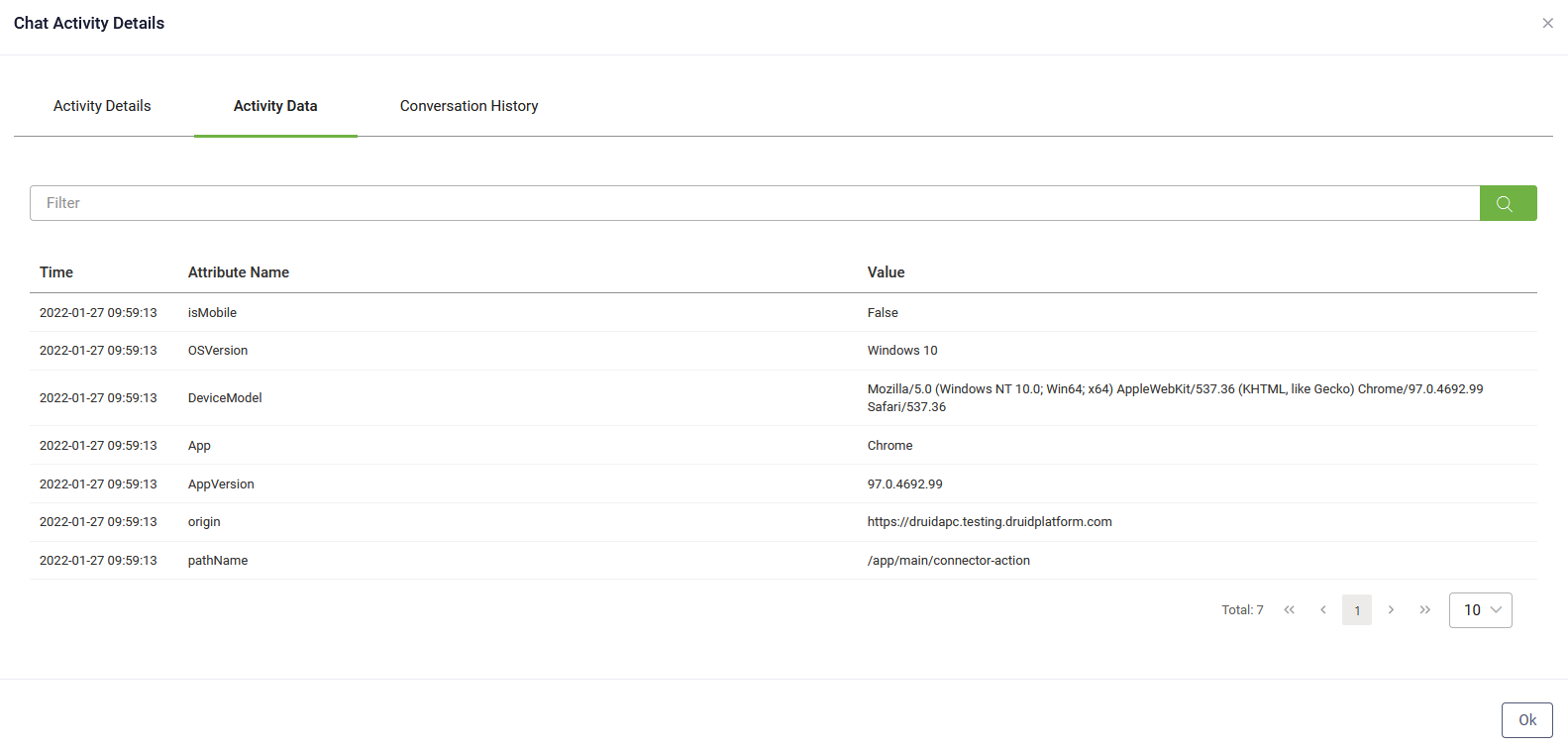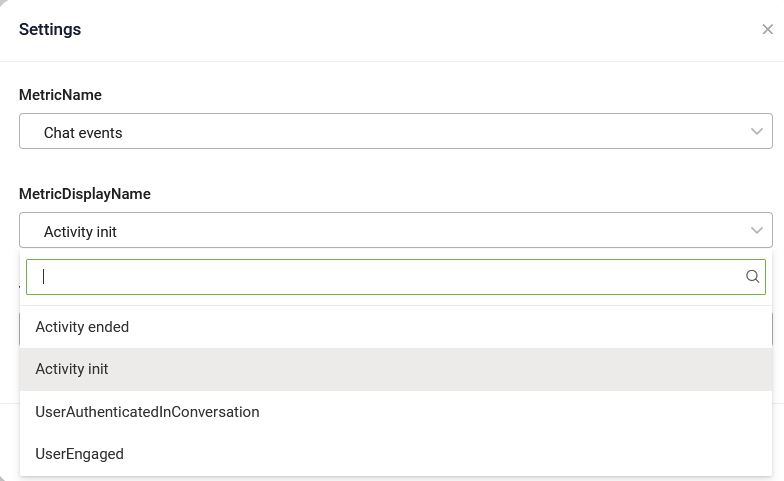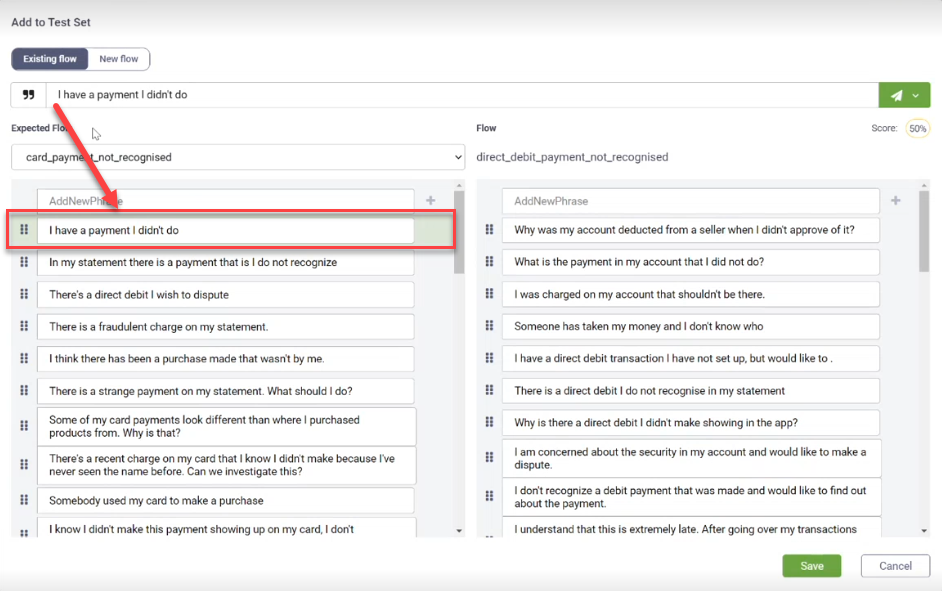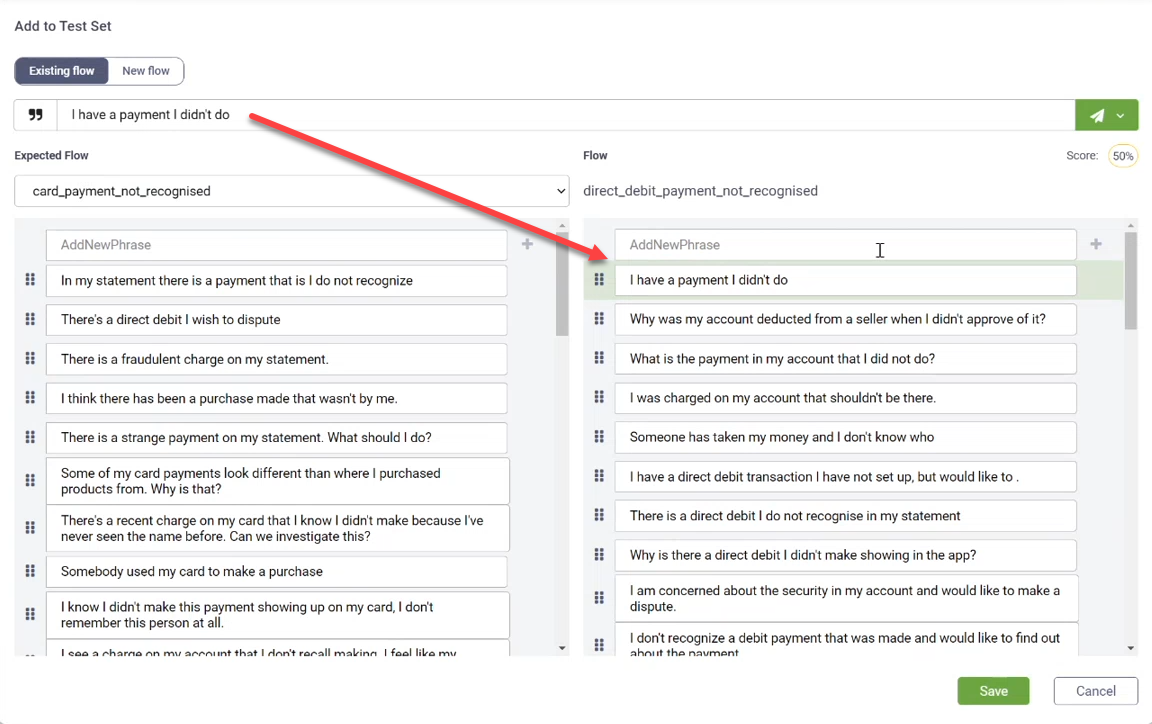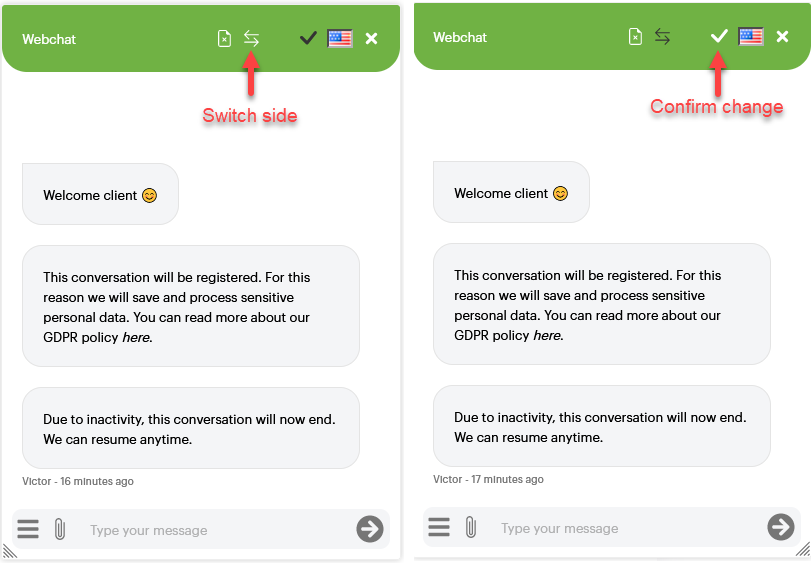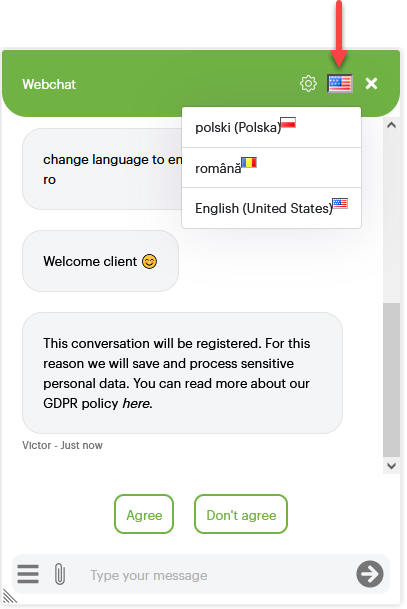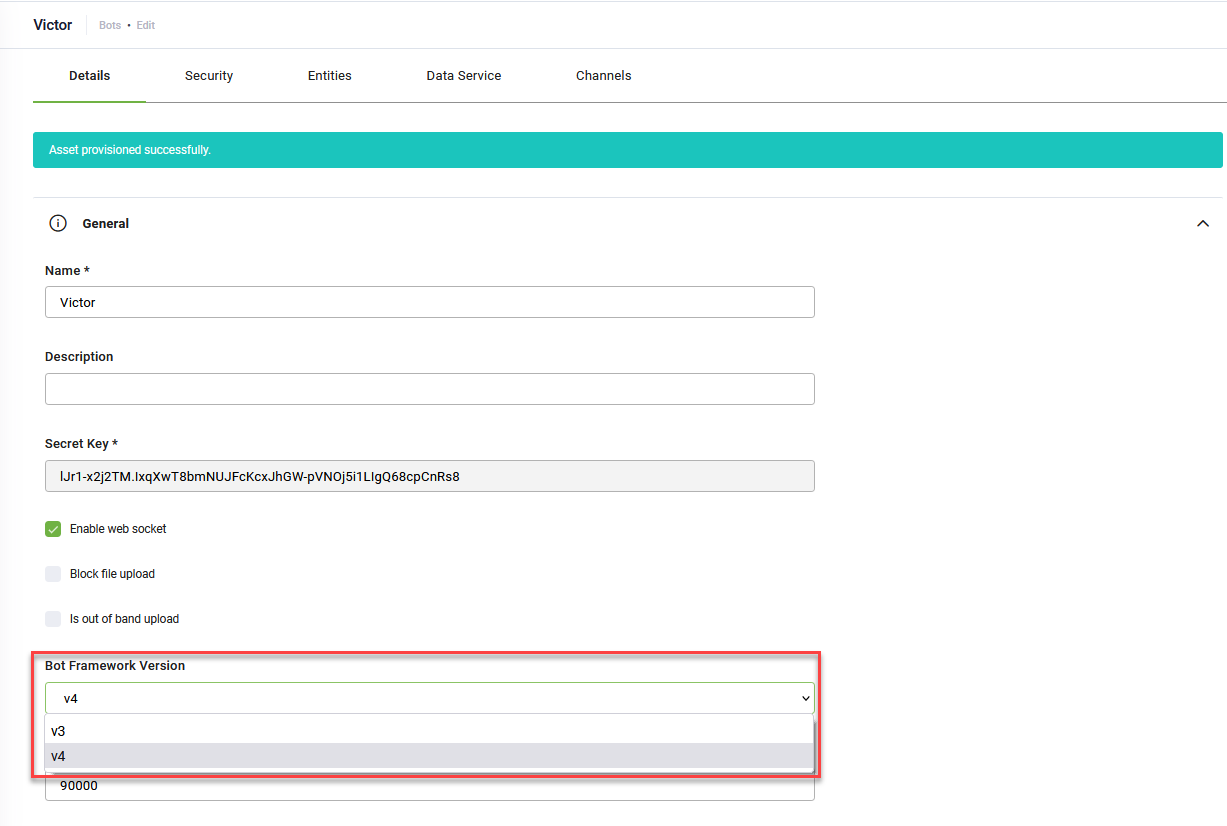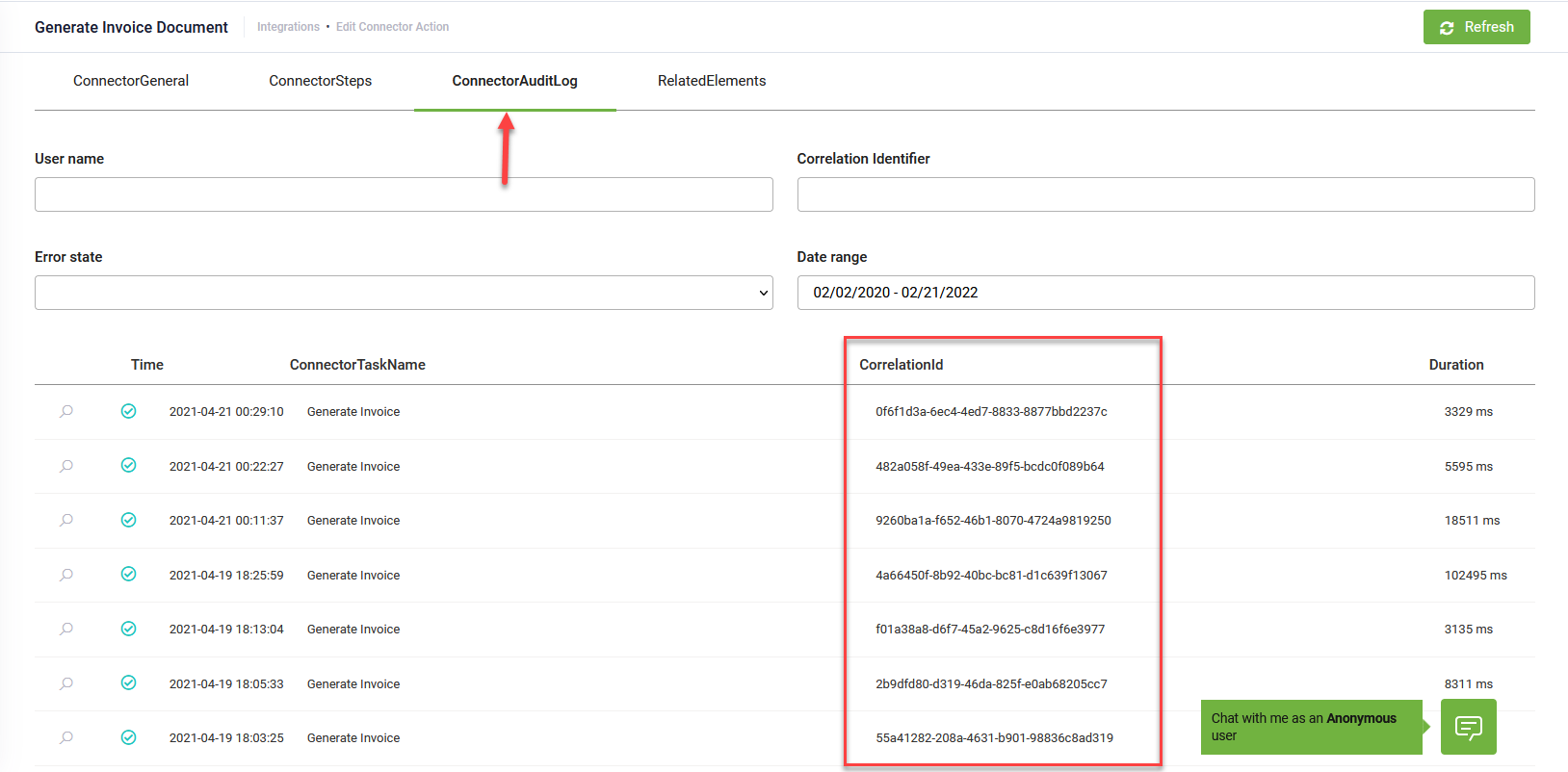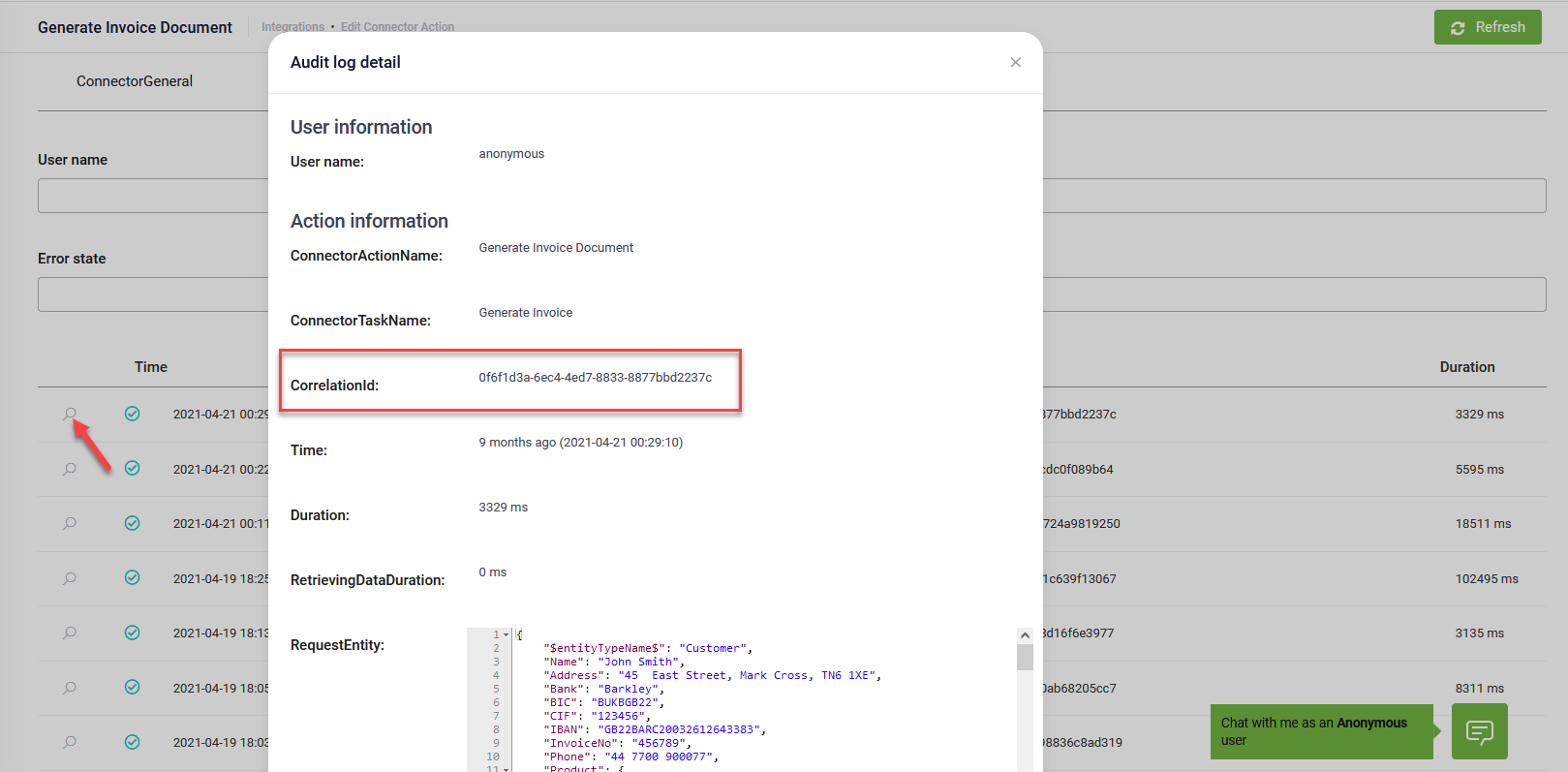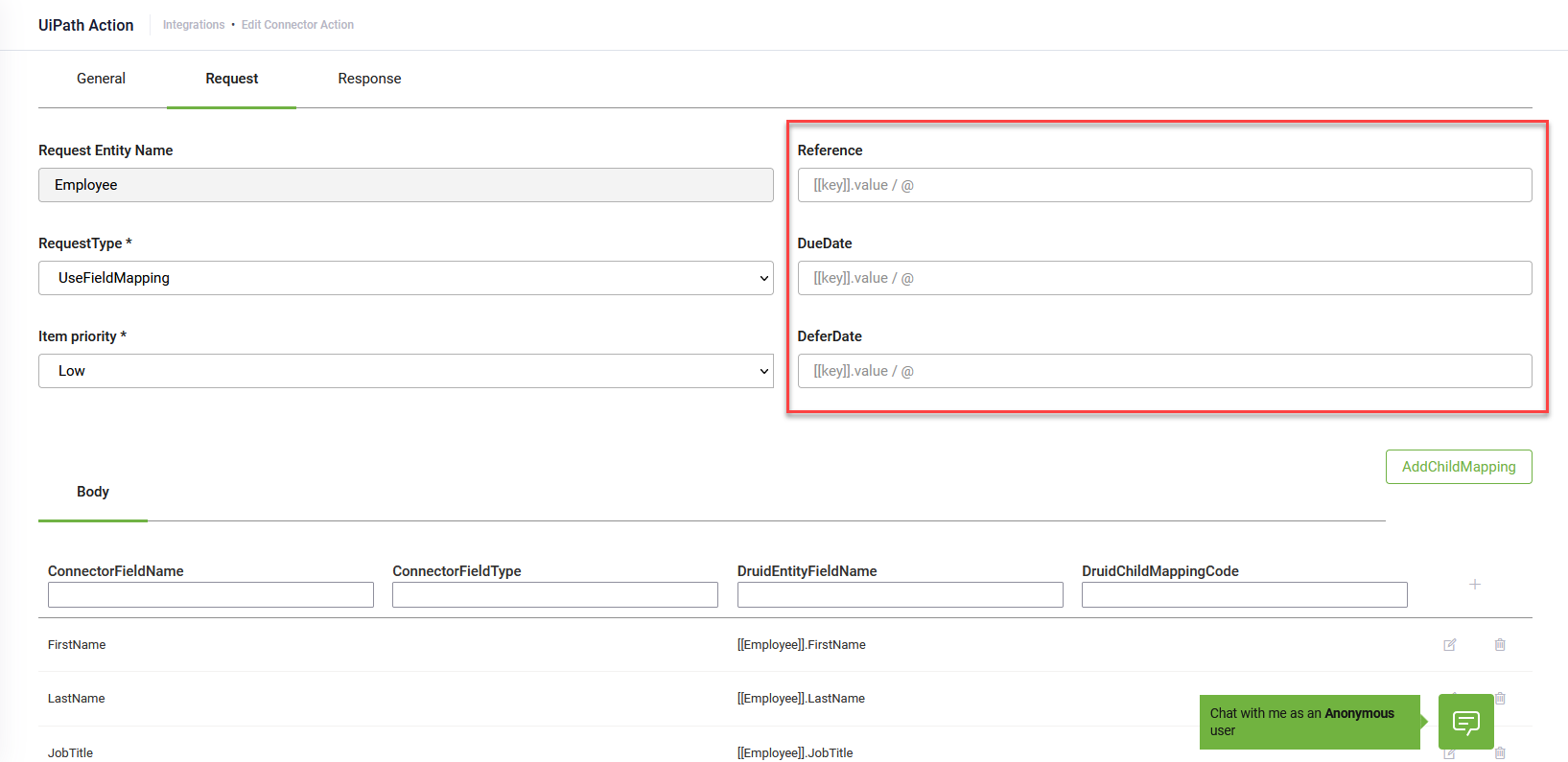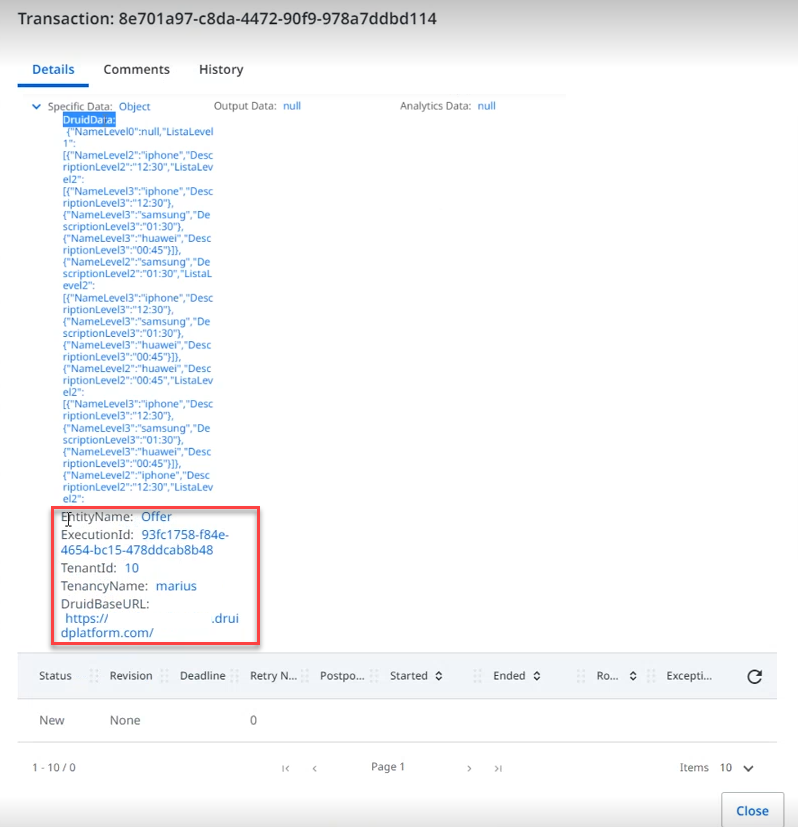Druid v1.59
Deployment Dates
The table below lists the deployment date of Druid v1.59 across Druid Clouds. To view the Druid Releases Calendar, see Druid ChatBot Releases.
|
Druid Cloud Community *.community.Druidplatform.com |
Druid Cloud US *.us.Druidplatform.com |
Druid Cloud Australia *au.Druidplatform.com |
Druid Cloud West-Europe (PROD) *.Druidplatform.com |
|---|---|---|---|
| February 17, 2022 | February 17, 2022 | February 17, 2022 | February 17, 2022 |
These release notes give you a brief, high-level description of the improvements implemented to existing features.
If you have questions about your Druid tenant, please contact support@Druidai.com or your local Druid partner for more information.
- UiPath Connector
- REST Connector – Added support for sending a collection in root
- Extended capabilities to AddItemToUiPathQueue connector task
- Extended capabilities to Download File connector task
What's New
- For directline (web channel), Druid automatically saves the following information from the [[QueryParams]] system entity when the user initiates the chat: isMobile, OSVersion, DeviceModel, App, AppVersion, origin, pathname. For information on these parameters, see System Entities, entity [[QueryParams]].
- A chat event metric is now available on the Dashboard, “Activity init” to count the number of times a chat is initiated (chat init events).
- To streamline the bot authors experience using the Evaluation tool, new features have been added:
- The default “User says” displays highlighted in green as the first line in the set of training phrases set.
- Add to Train Set / Test Set - Drag and drop functionality is now available for utterance multiple matches.
- When moving the default utterance from the current flow to another flow, it will be set as default utterance for the new flow (as first line highlighted in green).
- UiPath Data Service – Bot authors can now easily synchronize Druid’s informational model with UiPath informational model (schema). They can create Druid entities based on UiPath schema or export Druid entities in UiPath schema format and further import it directly in their UiPath Data Service tenants. This eliminates the extra work required for the manual creation of entities in both Druid and UiPath Data Service. For more information, see UiPath Data_Service .
- Bot Framework version 4 allows bot authors do extensive customization to the web chat snippet enabling chat users to:
- Show chat snippet on the left/right side of the screen by clicking in the chat snippet the Settings icon (
 ), clicking the Switch side icon and confirming the change (
), clicking the Switch side icon and confirming the change ( icon).
icon).
- End current conversation and initiate a new chat by clicking in the chat snippet the Settings icon (
 ), then clicking the Reset conversation icon.
), then clicking the Reset conversation icon.
- Change the chat language in any of the bot languages (default or additional language).
The information is received when authorizing anonymous users asynchronously. Druid also automatically saves this information in [[ChatActivityData]].
Improvements
- REST Connector – Added support for sending a collection in root when using requests of type Field Mapping. In this regard, a new option is available, Request body is a collection, which enables you to send multiple repetitive objects of the same type in a collection. This is particularly used when the REST API endpoint only accepts requests as collections.
- Download File connector task. To provide the Download File with full capabilities of a REST connector tasks covering as many use cases as possible, the following request types are now available on the Download File connector task: UseBodyTemplate, UseFormData, Binary and UseWwwFormUrlEncoded.
- The CorrelationId in now available in the ConnectorAuditLog and Audit Log detail, enabling bot authors easily correlate it with the conversation history.
- UiPath Connector – You can now specify there additional fields when placing items on UiPath queues: Reference, Due Date and DeferDate. This adds flexibility using Druid data in UiPath specific configurations.
- UiPath Connector – The AddItemsToUiPathQueues task now includes the Druid context data object properties expanded indie the Specific Data (root) object. For backwards compatibility, it also sends Druid data as stringified object inside DruidData property.
- For better user experience, the Breadcrumbs now shows the page title.
If the API endpoint only accepts requests as collections but you need to send a single object, use NestRequestInList instead. The request will be sent as a collection that contains one object.
Introducing UseFormData and Binary request types allows bot authors sending a file to retrieve files. For more information, see Download File.
Moreover, the UseFormData request type enables bot authors sending multiple files to REST API endpoints to retrieve the concatenated file.
Integrations > Connector Action > ConnectorAuditLog tab
For more information on these fields, see Adding Item to UiPath Queue.
For information on how to use the UiPath data, see Using UiPath Integration Data.
